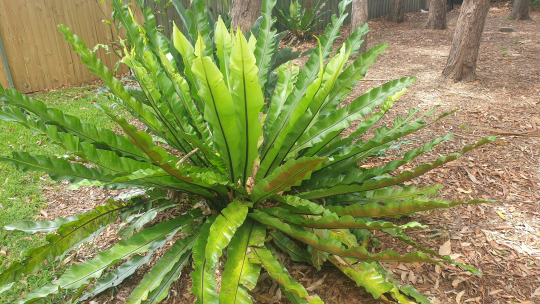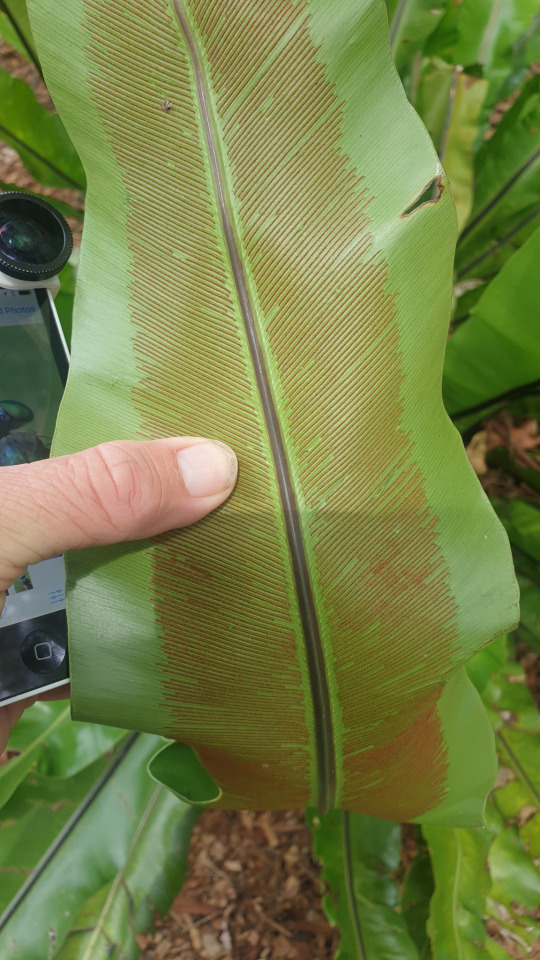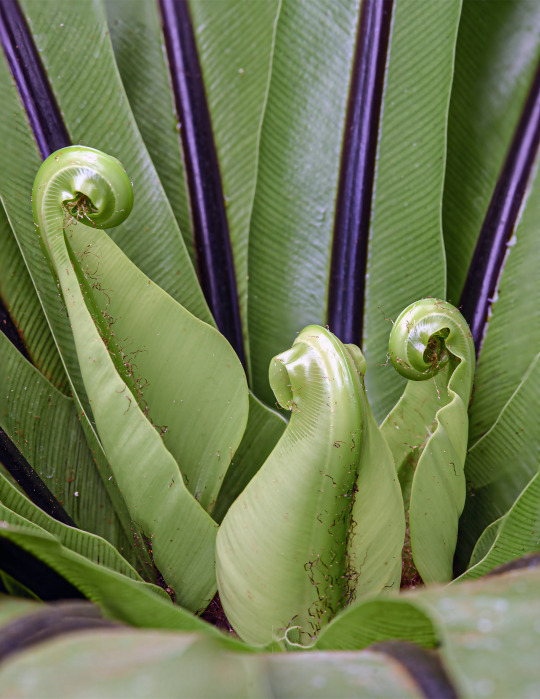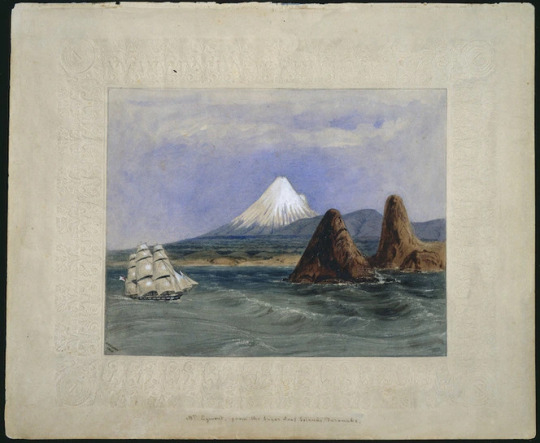#asplenium
Explore tagged Tumblr posts
Text

A drain with a view ^_^
182 notes
·
View notes
Text




Plant of the Day
Wednesday 2 April 2025
As a display featurein a garden centre was this old chair planted with a range of houseplants including several ferns. The seat featured an Asplenium nidus 'Crispy Wave’ (bird's nest fern) a slow-growing, tender, epiphytic fern. The rosettes of upright, glossy, evergreen fronds form the ‘nest’.
Jill Raggett
#Asplenium#bird's nest fern#Fern#houseplants#houseplant#chair#plants#horticulture#essex#fronds#evergreen#foliage
105 notes
·
View notes
Text

Asplenium nidus with sori. Commonly called the Bird's Nest Fern. The young leaves are edible and typically eaten boiled or stir fried. This particular plant is a cultivar that has these wavy leaf margins.
#Aspleniumnidus #Asplenium #nidus #BirdsNestFern #sori #sorus #CUgreenhouse #botany
63 notes
·
View notes
Text
#2189 - Asplenium australasicum - Bird's Nest Fern


A very large epiphytic fern endemic to Australia, with a somewhat complicated taxonomic history, not helped by the fact that it's anatomy is so simple that there's not much to distinguish it from related species. For example, Japanese ferns which were considered to be A. australasicum were found to be so genetically distinct they got renamed A. setori. It's also very similar to Asplenium nidus, which unhelpfully is also called Bird's Nest Fern, and is found from east tropical Africa, across Asia to Japan, and in northern Australia and various Pacific Islands.
The fern can grow to over a meter and a half across, collecting falling plant debris in the middle of the rosette - and also acquiring snakes, which can be a surprise for fern collectors. A popular ornamental plant, where given sufficient drainage, and grown as a vegetable for the growing fronds in Taiwan.
Mascot, Sydney, New South Wales
13 notes
·
View notes
Text





Dans les Pyrénées béarnaises, le vilage de Lescun, au fond de la Vallée d'Aspe. Christine et moi, nous nous y promenâmes il y a déjà une bonne quinzaine de jours...
Les murs secs accueillent mufliers, Capillaires des murailles, Millepertuis, Roses et même une chaussure accueille une plante (de pied ?)
(D'ailleurs si qqun reconnaît ces jolies fleurs violettes,.... je suis tombé sur Lobelia erinus)
#pyrénées#béarn#lescun#aspe#vallée d'aspe#botanique#fleur#rose#rosier#couleur#millepertuis#muflier#gueule-de-loup#asplenium#fougère#capillaire#capillaire des murailles#lobélie lobelia erinus
3 notes
·
View notes
Text

4 notes
·
View notes
Text
Becoming spleenwort savvy - Learning about some European Spleenworts (Asplenium spp.)
In the tropics where I grew up, the so called Bird’s-nest fern (Asplenium nidus) was all around, and that was my very early introduction to the large genus Asplenium, which comprises of some 700 species. When I studied in Tasmania, I learnt of a number of beautiful Southern hemispheric spleenworts (e.g. see my post on Asplenium obtusatum in Tasmania). Encountering their temperate northern…

View On WordPress
#Asplenium#Asplenium adiantum-nigrum#Asplenium obovatum#Asplenium ruta-muraria#Asplenium sclopendrium#Asplenium trichomanes#europe#European ferns#ferns#Inverness#Linnaeus#London#Porto#pteridophytes#spleenwort
0 notes
Text

0 notes
Text

It was a dull, grey, damp, misty sort of mild kind of morning, and a great mass of cloud was hovering above the hills, tickling the tops of the ridges around Algy's home and threatening to descend at any moment… which was not at all what the weather birds had forecast, for they had promised Algy a nice, bright, clear day with plenty of sunshine for a change.
A little disappointed, but scarcely surprised, Algy fluttered over to a low bank covered in a dense carpet of dry leaves, where a clump of hart's tongue ferns grew in a shady corner of his assistants' garden. The fronds seemed somewhat the worse for the winter, but they remained evergreen, and as Algy looked around he could see that other new green shoots and leaves were beginning to emerge with apparent enthusiasm here, there and everywhere.
Admiring the fortitude of the ferns, Algy was suddenly surprised by a gleam of low sunlight which sneaked through the branches of the shrubs behind his back, and as patches of yellow light played around the leaves, a Great Tit in a nearby tree began to sing its repetitive spring "song". Evidently his wee fluffy cousins, as well as the plants, knew that although March was not only scarcely here, but still many weeks away, spring was going to be unusually early this year, and Algy recalled that:
A Light exists in Spring Not present on the Year At any other period – When March is scarcely here A Color stands abroad On Solitary Fields That Science cannot overtake But Human Nature feels. It waits upon the Lawn, It shows the furthest Tree Upon the furthest Slope you know It almost speaks to you. Then as Horizons step Or Noons report away Without the Formula of sound It passes and we stay – A quality of loss Affecting our Content As Trade had suddenly encroached Upon a Sacrament.
[Algy is quoting the popular poem A Light exists in Spring by the 19th century American poet Emily Dickinson.]
#Algy#photographers on tumblr#writers on tumblr#scotland#scottish highlands#emily dickinson#a light exists in spring#poetry#poem#fluffy bird#spring is coming#harts tongue ferns#into the light#Asplenium scolopendrium#storybook land#fluffy#january#winter#seasons#changing seasons#light#hope#whimsy#original character#original content#adventures of algy#jenny chapman
49 notes
·
View notes
Text
🌱 New Plants & Old Plants 🌱
So today I went to a garden centre and got two new plants - a String-of-Pearls and a Hart's Tongue Fern. Meet Audrey and Apollo.


Audrey got her name from Audrey Hepburn's iconic pearl necklace from Breakfast At Tiffany's.
Apollo is a homage (a sibling, if you will), to a different fern I used to have (Bird's Nest - same Asplenium genus, different species), called Hermes. I miss my og leafy boy so so terribly, and I thought it would be nice to keep up with the greek name tradition for this one.
They are hanging above my desk, where they get plenty of sunlight (not directly). Apollo's leaves are well accommodated, so no worries there. Not sure if I want to make it his permanent place, but for now it's perfect.


Meanwhile, I have moved my shelf plants down, to see if they can get more sunlight, and I'm trying to revive one of my succulent's roots.


We got Bino (Burro's Tail), Chamuça and it's little offspring Kaka Poopoo (Haworthia Tortuosa), and Pietro (Haworthia Aristata).
Bino was growing really nicely but when I moved him to this room, he did NOT like the extra cold months and literally dropped like half of its leaves 🫤
Turns out my shelves are a tad too high for the plants and they don't get enough light there. Hopefully now that they're down (and facing the window directly) they will be good. The two spiky Haworthias have been thriving tbh, but I think they'll appreciate the extra light.
Pietro tho.... That dawg was planted too low on his vase, so even though he had good drainage, he just did not get enough sunlight and the roots rotted and fell off. I gave it a good bath, removed the dead ones, and am keeping him in water for the foreseeable future until more roots grow and he is ready to go back to soil.
#yes Chamuça is portuguese for Samosa (the food). yes Kaka Poopoo is exactly what you think it is.#those three plants were named by my sister so. no judgement 💙 she's a silly gal 💙#burro's tails are the most frustrating plants ever istg. if you even BREATHE in their direction - leaves will drop#apparently string of pearls are not the most care-friendly so. let's hope i keep her well and alive#so far i've only had one plant die on me for negligence (Zelda came with bugs already so she doesn't count! i did all i could!) but.#you never know#too early to gauge how Anastasia is handling her new pole but so far she's fine#didn't even guttate! still keeping an extra eye peeled for any changes but. she's my girl 🥹#ngl having an asplenium fern again is making me emosh 🥺 Hermes was legitimately like a pet to me. which sounds silly i guess but#he was (still is) my most favourite plant and it kills me that i had to give him up#(especially cus i gave him to my ex friend <- most toxic and exasperating person i ever had the displeasure of befriending)#(and she did NOT deserve any of my plants much less Hermes. but it had to be done 😔 i'm gonna keep Apollo forever and ever)#plant diary#plant audrey#plant apollo#plant bino#plant chamuça#plant kaka poopoo#plant pietro
15 notes
·
View notes
Text


Sea spleenwort fronds glistening in a dark crevice on the rocky shore.
228 notes
·
View notes
Text



Plant of the Day
Thursday 26 September 2024
Growing in a churchyard wall was this small, evergreen fern Asplenium trichomanes (maidenhair spleenwort, common spleenwort, English maidenhair, green spleenwort, waterwort). This plants has creeping rhizomes and forms a rosette of blackish-stemmed fronds. It has a huge native distribution, including Europe, Asia, North America, Central and South America. A number of sub-species exist, each suited to the varying growing conditions.
Jill Raggett
#asplenium#maidenhair spleenwort#common spleenwort#English maidenhair#green spleenwort#waterwort#fern#wall#plants#horticulture#garden#scotland#foliage#fronds#native
121 notes
·
View notes
Text

Asplenium nidus. To me, these emerging leaves on the Bird's Nest Fern look like a family having a private discussion.
#Aspleniumnidus #Asplenium #nidus #BirdsNestFern #fern #CUgreenhouse #botany
11 notes
·
View notes
Text

2024_02_26
3 notes
·
View notes
Text
The Great ACT-NSW-NZ Trip, 2023-2024 - Taranaki Maunga
A 2,518 metres (8,261 ft) tall stratovolcano, ideally positioned to catch every change in the weather coming off the Tasman. As a result it gets up to 11 meters of rain a year, and the winds between the peak and the remains of its predecessor can exceed 130kph.

Naturally, of great importance to the local iwi, and it certainly made an impression of the Europeans too - although a lot of early paintings exaggerate the height.

watercolour by Charles Heaphy, some time between 1839 and 1849.
They named it Mt Egmont, although happily the original name is back to being the official one.
The volcano erupts, on average, every 90 years, with major eruptions every 500. Of considerably more concern are the repeated catastrophic cone collapses that turn most of the volcano into gigantic landslides sweeping fridge-sized boulders and smaller debris dozens of kilometers away from the volcano, and well past the current coastline.
Anyway, while we wait for it to go bang again, visitors can enjoy the fascinating change in vegetation as you go up the mountain. As you get higher and higher, the coastal vegetation is replaced by the goblin forests, contorted mossy woods dominated by Kamahi (Weinmannia racemosa), that developed after eruptions destroyed the preexisting podocarp and Nothofagus forest, and as you go higher the trees are replaced by tussock grasses and later alpine plants.



There are still kiwi in the national park, which is one reason dogs are strictly banned. The introduced stoats continue to be a problem - we saw one on one of the tracks.

There was also this building, a corrugated iron structure noteworthy for being the oldest such building left anywhere in the world. It was originally a fort, and still has gun slits. The windows are new.
Most of the species I saw around the visitors center are were new to me - I could have spent a week just phtographing the incredible lichens in the goblin forest. Here's some that weren't new.





And a few lichens I don't have an ID on.



#taranaki#new zealand volcano#mount taranaki#taranaki maunga#orocrambus#new zealand moth#crambidae#miro#podocarp#new zealand plant#Pectinopitys#podocarpaceae#asteraceae#Olearia#kamahi#Weinmannia#Cunoniaceae#Charles Heaphy#asplenium#new zealand fern#aspleniaceae#spleenwort#goblin forest
12 notes
·
View notes
